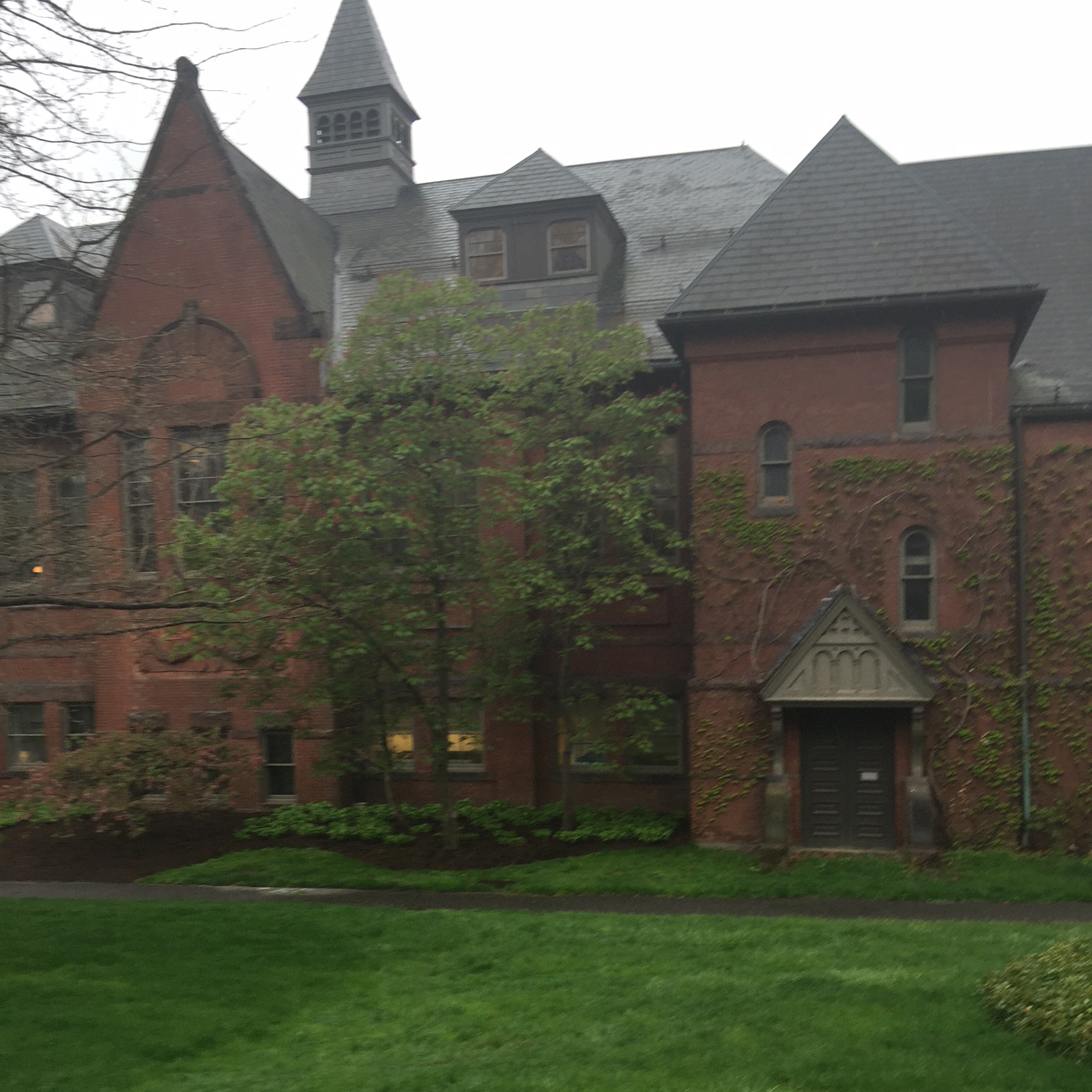By Sue Luse
About
With applications to women’s colleges on the rise, Smith College – a member of the original Seven Sisters – is prepared to successfully launch a growing number of future Ph.D. candidates into society. Founded in 1871, Smith College is overseen by the institution’s 11th president, Dr. Kathleen McCartney, who was the first in her family to attend college. Dr. McCartney parlayed her education at Tufts and Yale to become the visionary dean of the Harvard Graduate School of Education prior to her arrival at Smith. For the current 2,500 hard-working, ambitious Smith undergraduates, an “ageless women’s network” replaces the old boys’ network.
(See At a Glance 2019 for updated information about Smith College.)
Location
Smith is a vital part of the Northampton community (population 28,500) in Massachusetts’ picturesque Pioneer Valley. Northampton is known as a liberal hub for academics, artists, and musicians. The streets of the quaint downtown are dotted with art galleries and museums. The Smith College Museum of Art (SCMA) features four floors which house the permanent collection, the Cunningham Center for the Study of Prints, Drawings, and Photographs, and changing exhibitions. Charlotte Feng Ford ’83, a prominent New York art collector and philanthropist, recently endowed a curator’s position in contemporary art at SCMA.
Academics
One-half of Smith students arrive on campus undecided about their future course, but they graduate with strong direction. Each Smith student is on a customized, writing-intensive journey to obtain her major or majors, but it’s not the “Wild West.” Close advising relationships between professors and students, and an open curriculum where each and every seminar is filled with passionate students, means low faculty turnover. As a member of the Five College Consortium (in addition to Amherst, Hampshire, Mount Holyoke, and University of Massachusetts at Amherst), students have access to 6,000 courses, eleven museums, and a library system with 11 million items.
Forty percent of “Smithies” are STEM majors. In fact, Smith was the first women’s college – and now, one of only two – to offer a certified engineering program. Many Smith undergraduates move between Smith and U Mass to obtain either an A.B. or B.S. (accredited by ABET) from the Picker Engineering Program. While traditional minors are available, Smith also offers the opportunity to pursue a concentration. A concentration is a means to organize a combination of intellectual and practical experiences, such as internships and service learning, around an area of interest. Currently, there are 13 available concentrations, including biomathematical sciences, community engagement and social change, and women’s education.
Through the Lazarus Center for Career Development, approximately 400 students each year receive Praxis stipends to work at unpaid summer internships, both here and abroad, in health care, government, education, communications, research, social welfare, technology, law, science, and the arts. The goal is to build on academic studies and explore career options.
Student Life
“Smith is heady, nervy, intellectually exciting,” according to the college’s own website. All Smith students are members of the Student Government Association, which supports more than 100 mainstream and avant-garde organizations. Aerosmith is a student-run program for aerospace enthusiasts; Aerosmith hosts events for young girls in the community to teach them how to fly model planes and aircrafts. The Erg Club, which originated from the winter training program of the varsity crew team, has a mission to introduce indoor rowing to the Smithie masses. And the Bearded Ladies are focused on learning and sharing circus arts skills. Tumbling, partner acrobatics, hand balancing and juggling, and aerial fabric are part of their repertoire.
Smith’s varsity and club athletic teams have been known as the Pioneers since 1986. The name reflects the overriding Smith spirit, and specifically, the fact that the country’s first women’s basketball game was played at Smith in 1893. As the first women’s college to join the NCAA, the Smith logo or “spirit mark” links pioneering alumnae athletes to their competitive counterparts today.
For Smith alumnae and students, traditions are a binding force. Mountain Day, Otelia Cromwell Day, and Rally Day are just a few honored traditions. On Ivy Day – the day before Commencement – junior ushers lead a campus parade of graduating seniors, while carrying an “ivy chain” (made of laurel leaves) on their shoulders. Alumnae and their children also participate in the parade and dress in white and wear sashes in their class color. They line up in reverse order by class along both sides of the route. Seniors line up nearest the end of the parade route and carry a single red rose. The seniors cheer each alumnae class as it marches past and then fall in to join the end of the parade. Many alumnae classes carry signs with humorous poems or slogans, or hold balloons or wear hats in their class color. Ivy Day festivities include the planting of actual ivy in honor of the graduating seniors’ enduring ties to Smith.
Housing and Dining
Smith is “home,” complete with a piano. Students live in 37 large, welcoming wood-frame or brick houses on a leafy campus. The houses are student-run. Dormitories and sororities do not exist. Young women of varying ages live together from the start. According to Vanessa Pius, a rising Smith senior and Gold Key Tour Guide, older students take newer ones under their wings through programs like “Big Sib/Little Sib.” Whom do I pick as my advisor? What do I wear to a party in the quad? Where should I study abroad? Little sibs turn to their big sibs for the answers. Smith’s housing program is so successful that fifty percent of students opt to stay in the same house for all four years.
With 15 dining rooms on campus, Smith is about variety. Is vegan, Asian, or “healthy options” your first choice? Each dining room offers a unique menu, theme, and type of food. No matter the home residence, students choose where to eat on campus. A reflection of Smith’s homelike atmosphere is the continuing popularity of benefactor Sophia Smith’s recipe for molasses cookies. These cookies often are served at the traditional Friday afternoon tea held in each house, when students, faculty and staff members, and alumnae socialize.
All residential students participate in a full-board plan, consisting of breakfast, lunch, and dinner seven days a week. Meals are served buffet-style to accommodate busy student schedules. The exception is Thursday dinner, when some houses host family-style meals which may include invited faculty or staff members.
Admissions
For the Class of 2020, Smith received a record-breaking 5,251 applicants for approximately 620 openings. A median ACT composite score of 30 is the standard, although Smith is test-optional and alumnae-interview-optional. In October of 2015, Smith announced the adoption of the Coalition Application, a new evaluation system for college applicants spearheaded by Smith, University of Maryland and Emory University. The Coalition Application will give each applicant a “virtual locker” to highlight her holistic accomplishments during the four years of high school.
Smith seeks applicants who will build upon the existing multicultural community of bright women from all 50 states and 70 countries, and from almost every racial, ethnic, political, social, economic, religious, and cultural background. Thus, spirited dialogues are the Smith norm. Sixty-three percent of Smithies participate in work study to finance their college tuitions, and sixty-two percent receive financial aid.
Smith offers some of its finest incoming first-year students the best possible perk: an annual scholarship which includes a paid research position with a Smith professor. Approximately 50 students per graduating class receive Student Research in Departments (STRIDE) scholarships of $20,000 per year over four years. STRIDE scholars also receive annual stipends of $2,400 per year for two years linked to research with faculty members. Most liberal arts colleges offer research opportunities only to juniors, seniors and graduate students. Since its inception in 1992, Smith’s unique program has been featured in The New York Times and USA Today.
Who Would Be Happy Here?
Liberal, intelligent young women from Minnesota would love the Smith undergraduate experience. The 46,000 alumnae network is huge. The alumnae walk the talk and honor Smith traditions. There’s a strong culture of empowering women, regardless of socioeconomic circumstances, and giving back in the truest sense. The campus is populated by introverted extroverts. For a more in-depth perspective, visit the official Smith student blog, “Smith on Smithies.”












